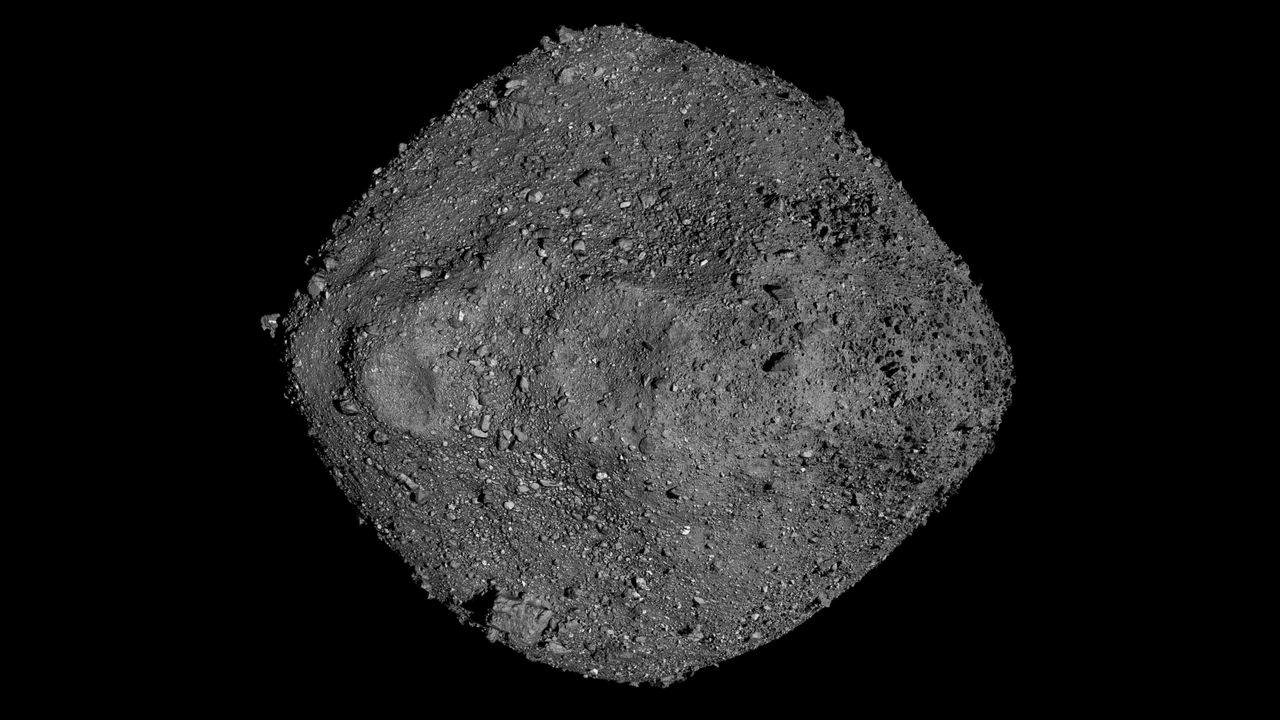Now Reading: Asteroid Bennu Holds Dust Older Than Solar System, Traces of Interstellar Space
-
01
Asteroid Bennu Holds Dust Older Than Solar System, Traces of Interstellar Space
Asteroid Bennu Holds Dust Older Than Solar System, Traces of Interstellar Space

quick Summary
- NASA’s OSIRIS-REx mission brought samples from the asteroid Bennu to Earth in 2023, revealing stardust older than the solar system, organic materials, and interstellar ice.
- The samples provide insight into cosmic conditions before our solar system’s formation around 4.6 billion years ago and detail Bennu’s parent body’s origins.
- A study reveals Bennu was formed from fragments of a larger asteroid that broke apart due to a violent collision in the outer solar system beyond Jupiter and Saturn. These fragments reassembled multiple times before coalescing into Bennu.
- Another study compared Bennu with asteroid Ryugu samples collected by Japan’s Hayabusa2 mission and primitive meteorites, showing significant water-related changes in Bennu’s parent materials over time. About 80% of the studied sample consists of minerals containing water formed through reactions between melted ice and dust.
- A third paper found evidence of micrometeorite impacts on Bennu’s surface through microscopic craters and molten rock traces caused by collisions over time,alongside solar wind effects on its surface weathering at faster rates than expected.
- researchers emphasized that asteroids serve as “time capsules” for early solar system conditions, contributing to understanding life’s origins on Earth.
!asteroid Image
Image Credit: NASA/Goddard/University of Arizona
!Electron Microscope Image
A scanning electron microscope image shows a micrometeorite impact crater on material from asteroid bennu.
Indian Opinion Analysis
NASA’s findings underline how asteroids like Bennu are invaluable scientific resources for studying Earth’s history within broader cosmic contexts. Interstellar stardust revealed in these studies offers crucial data about pre-solar conditions-frameworks that both astrobiologists seeking answers about life formation and geoscientists investigating planetary evolution will find applicable across disciplines.
For India’s burgeoning space program under ISRO (Indian Space Research Organisation), this research should highlight potential opportunities for collaboration or pursuing similar missions targeting primitive celestial objects like asteroids or comets through initiatives such as Gaganyaan or Chandrayaan extensions. Exploring shared expertise globally can help position India as an active participant in uncovering critical knowledge about space science while amplifying domestic technological capabilities.
Further comprehension regarding ancient extraterrestrial environments might prove instrumental not only scientifically but also practically-especially if enriched collaboration strategies emerge backing sustainable futures tied toward resource exploration outside Earth someday.























